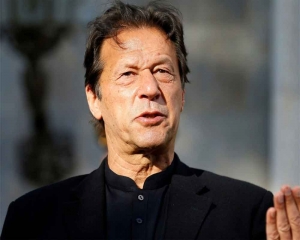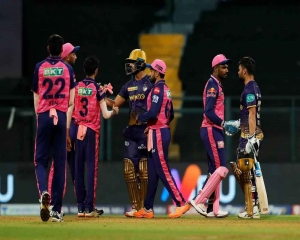Revisiting Supreme Court’s basic structure doctrine
S JYOTIRANJAN
The Constitution 103rd Amendment Act, 2019 is presently challenged before a Supreme Court Bench comprising Chief Justice UU Lalit and Justices Dinesh Maheshwari, S Ravindra Bhat, Bela M Trivedi and JB Pardiwala. The question before the Bench is premised on the Constitutional validity of reservation for Economically Weaker Sections and as to whether the legislation is violating the “basic structure doctrine of the Constitution”. As the hearing in the matter is in progress, the court will in due course of time decide on the fate of the legislation, but this definitely takes our thoughts back in time as to the origin of the “basic structure” doctrine.
It is a known fact that under our Constitution, the courts are empowered to invalidate, strike down or declare executive orders and legislative enactments, which they find to be violating any part of the Fundamental Rights guaranteed in Part III of the Constitution, as void. However, the Constitution is strangely silent on whether the courts are empowered to adjudicate on the constitutionality of the constitutional amendments passed by following the procedure prescribed in Article 368.
The courts were on a constant search for exploring and devising some limitations on the amending power. In 1951, a five-judge Bench in Sankari Prasad Vs Union of India failed to draw any limitation; and fourteen years later, another five-judge Bench in Sajjan Singh Vs State of Rajasthan reiterated the same.
However in 1973, in the Kesavananda Bharati case, which contained (as was described then) “an issue of grave moment, not only to the future of this country but to the future of democracy itself!”, was heard by a Bench of 13 judges. The Bench toiled really hard and sat for the longest time listening to arguments. Ultimately, by a 7:6 majority verdict, it held that no amendment under Article 368 was permissible if it tinkers with “the basic structure of the Constitution” even though the amending power under the provision was plenary.
The new precedent set by the Constitution was then criticised for the judicial innovation called, “the basic structure doctrine”, since it was viewed by the critics as if the courts have become ‘guardians over the Constitution’from being the ‘guardians of the Constitution’.
Later, on June 12, 1975, the High Court of Allahabad ruled against the then Prime Minister Indira Gandhi and she lost the election petition filed against her by her political opponent Raj Narain, who had contested against her in the 1971 elections from Rae Bareilly. As fate had it, this led to a ‘moment of paradox’, ‘a Prime Minister in office stood unseated in Parliament’. And in the meantime, as Indira Gandhi’s appeal was pending before the Supreme Court, an Internal Emergency was imposed from June 25, 1975; and subsequently, Parliament passed the Constitution 39th Amendment Bill in August 1975. This legislation provided, ‘no law made by Parliament would apply to the election of a person appointed as Prime Minister and that the election of such person shall not be deemed to be void or ever to have become void; it would continue to be valid in all respects’.
In fact, the constitutional amendment attempted to reverse the judgment of Justice Jagmohan Lal Sinha of the Allahabad High Court holding Mrs Gandhi guilty of “corrupt practice” under election laws of the time. Later, in Indira Gandhi Vs. Raj Narain (1975), a Constitution Bench of the Supreme for the first time relied on the Kesavananda Bharti judgment and held that that free and fair elections were a fundamental part of the Constitution and, therefore, beyond the reach of the amending power. This decision in Indira Gandhi Vs. Raj Narain (1975) cemented the “basic structure doctrine” to the eternity of the constitutional future.
Subsequently in 2007, a Bench of nine judges in I.R. Coelho Vs. State of Tamil Nadu was confronted with the question “whether, after the Keshvananda Bharati judgment, laws in the Ninth Schedule be exempted from judicial review considering it to be violative of the basic structure”. In its decision in this case, the Bench unanimously upheld the majority view (of 7:6) in Kesavananda Bharati and held that any amendment found inconsistent with Part III of the Constitution even if it is in the Ninth Schedule would be struck down by the process of judicial review. It was because the court attached great significance to the inviolability of the basic structure of the Constitution.
The basic structure doctrine has been largely successful because it has successful defended the fundamental rights of the citizens and the spirit of the Constitution and has been quite elemental in guarding against any slightest attempt of abuse of legislative or executive power.
(The writer is an Addl. Central Government Standing Counsel and a Distinguished Adjunct Professor of Law and Media Studies, School of Mass Communication, KIIT University. Views are personal)

























